Technologies
Logitech Blue Sona Review: All the Mic You Need
The Blue Sona XLR microphone is an outstanding choice for budding podcasters looking to get more serious and pros who want a simplified setup.
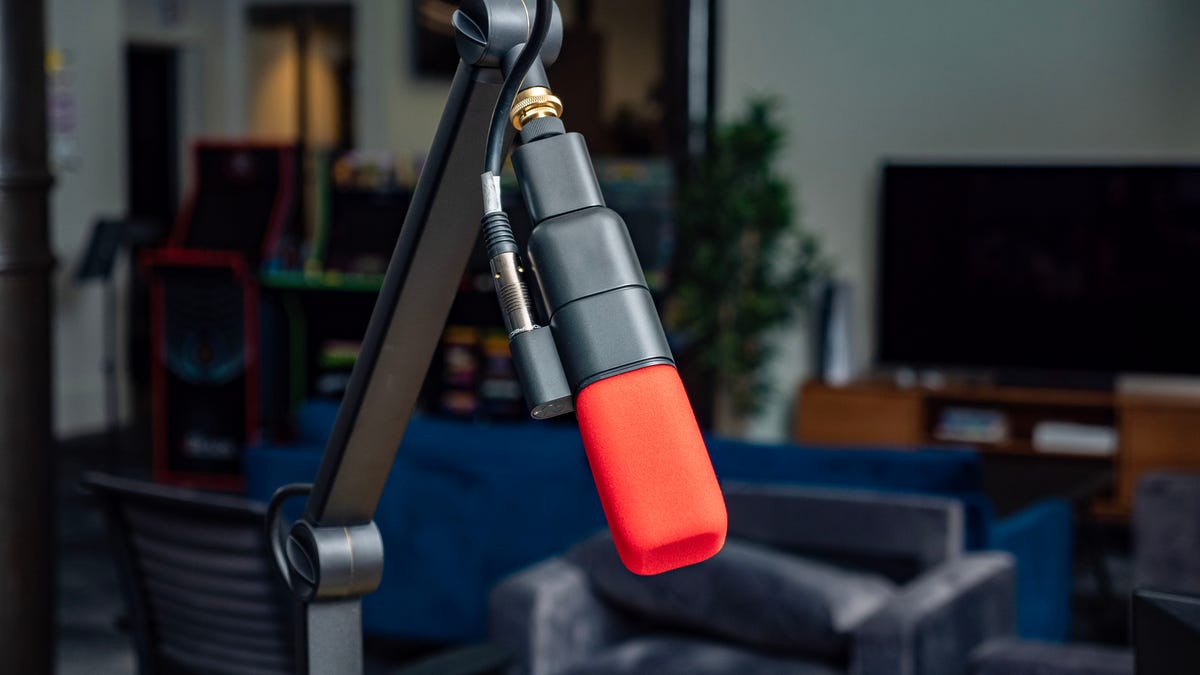
Logitech’s goal with the Blue Sona dynamic XLR microphone is straightforward: Give people an accessible option for pro-level audio no matter what it’s plugged into. Whether you’re an experienced producer or just starting out, you’ll get amazing sound with minimal effort.
I fall into the «just starting out» user category, so I got testing help from former CNET podcast producer and audio engineer Bryan VanGelder to ensure the Sona lived up to Blue’s claims. Ultimately, we both arrived at the same conclusion: The Blue Sona makes it extremely easy to get clean, clear audio regardless of your experience level. It does come with a pro-gear price of $350 (£299, AU$530 converted), but you get a top-quality mic in return.
If you’re new to XLR microphones, they use an analog three-pin connector and are the standard for professional audio. Unlike a USB microphone, an XLR mic must be plugged into an audio interface with an XLR cable to convert the audio from analog to digital before connecting to a computer. You can get a USB mic that is as good as an XLR mic, but XLR is needed to connect to other pro audio gear, such as a mixer. It also lets you connect multiple mics simultaneously through a single audio interface into a computer.
To test the claim that you’ll get pro sound regardless of what audio interface it’s plugged into, we went with the cheapest option we could find on Amazon, the $30 Xtuga Q-12. If you’re investing $350, you’ll probably want an interface that’s even just a little better. But the Xtuga proved the Sona can get you great results with the most basic audio interface. The interface you go with does need to support 24- or 48-volt phantom power.


The mic capsule has two diaphragms, one to capture voice and another mounted in reverse to cancel vibration.
Josh Goldman/CNETBest of both worlds
The Sona is a dynamic microphone that handles loud voices and noises better than a more sensitive condenser mic might. That means it’s good for game streaming or anything where you might have audio spikes, as it will help with distortion and clipping.
The mic also has a tight supercardioid pickup pattern that focuses on what’s in front of the mic while rejecting background noise. Combined with Blue’s ClearAmp technology that gives the mic an additional 25dB gain, the Sona has the greater sensitivity needed to boost quieter sources, functioning like a condenser mic. ClearAmp also means you don’t need to add a preamp gain like a Cloudlifter to your setup.
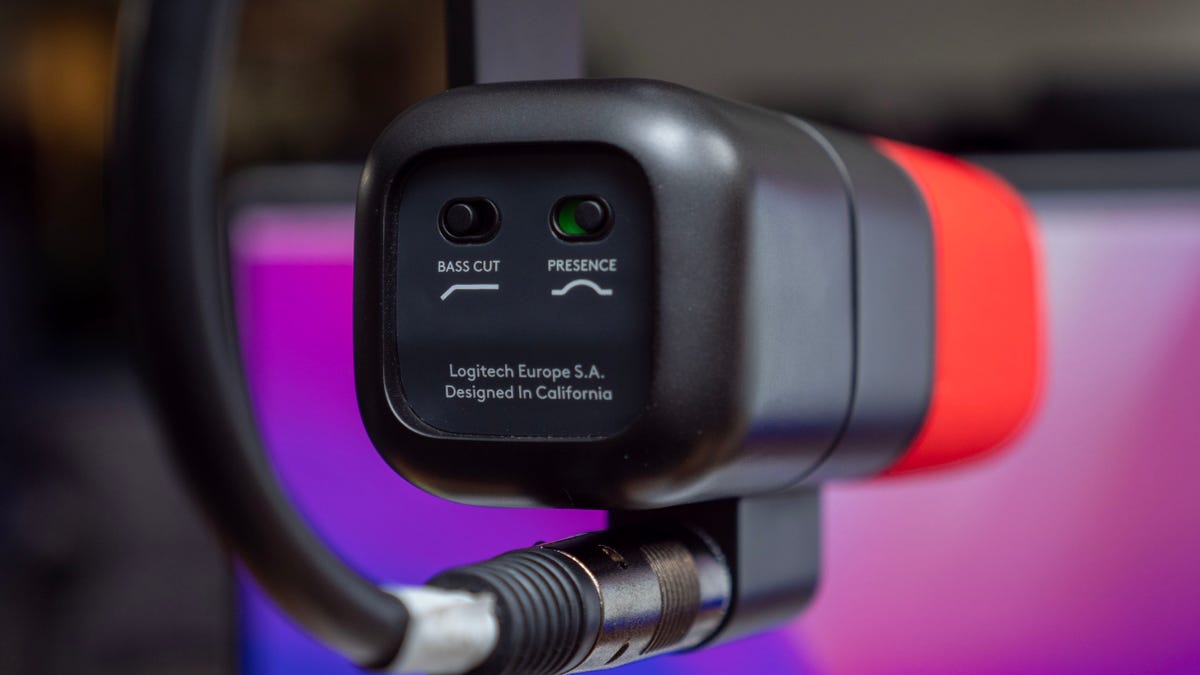

Tone controls are hidden under a magnetic cover on the back.
Josh Goldman/CNETAgain, the sound from the Blue Sona is clean with excellent clarity. Even the din of an open office and the HVAC blower over my desk was kept quiet. Bryan noted its robust low end and that it took a fair amount of effort to overload it. He put the Sona on par with the popular Shure SM7b. He also said the built-in high-pass filter and presence toggles on the rear of the mic make a noticeable difference in clarity too. They’re definitely worth experimenting with to get the tone you want from the mic.
Lastly, the Sona’s build quality is exceptional. The metal body gives it a professional look and feel. There’s an internal shock mount for the mic capsule. If you tend to get a bit animated when you talk or are concerned about bumps or vibration, the mount helps keep it all under control. Plus, the single-knob design allows it to rotatefreely to use sitting on a desk or mounted on a boom.
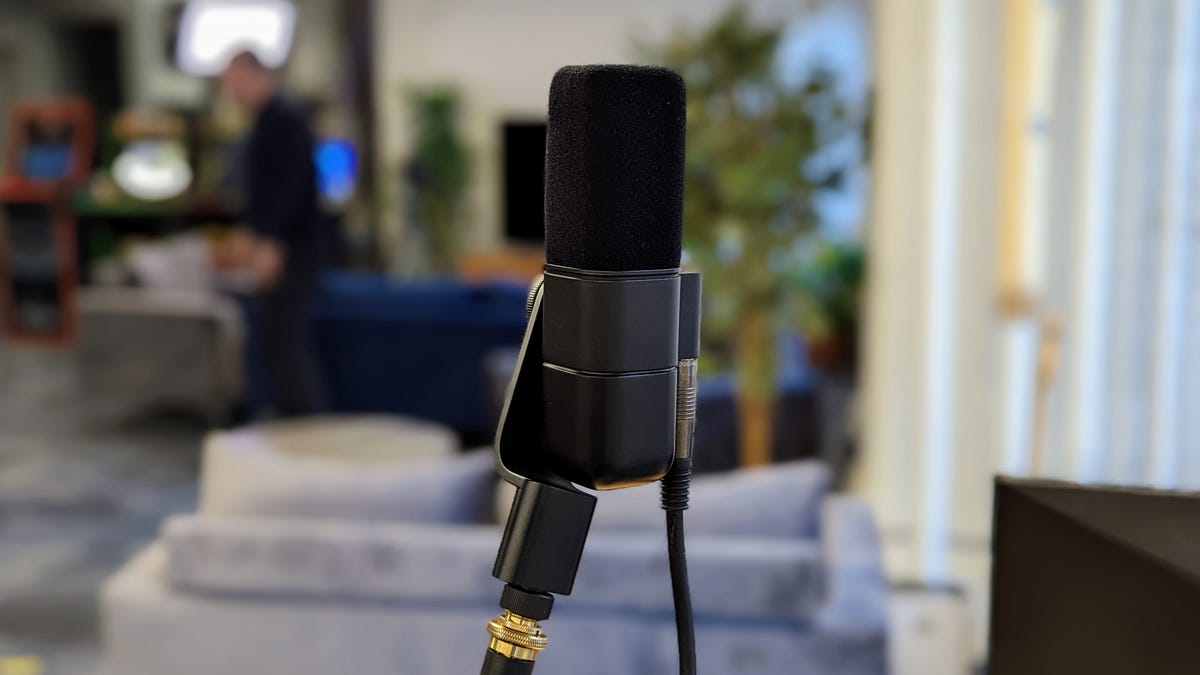

Black and red foam windscreens are included.
Josh Goldman/CNETIn the box with the mic are two foam windscreens that magnetically click into place, making quick swaps simple. There’s also a 3/8-inch mic stand adapter. That’s all though, so if this is your first XLR mic, you’ll need an XLR cable and audio interface to connect to a computer.
Though it requires more investment than a USB mic, the Logitech Blue Sona’s straightforward design and features make it a superb choice if you’re ready to graduate to an XLR mic. And the built-in gain also means you need one less piece of equipment to buy and clutter up your workstation. Something to remember if you’re launching your podcasting career from a tiny desk in your apartment or if you’re a pro in need of a simple, space-saving option.
Technologies
Nintendo’s Pokemon Legends: Z-A Is a Hit. Just Ask My Kid
Pokemon Legends: Z-A has sucked my family in, and I can’t get my Switch controller back from my son.

I’d love to tell you all about Pokemon Legends: Z-A, arriving this week, and what it’s been like to play on the Nintendo Switch 2. I can mostly do that — but for most of the past five days, it hasn’t really been me playing. What started as co-playing together quickly turned into my kid taking over completely as he got hooked. And honestly, I’d say that’s a good sign.
Nintendo makes a lot of Pokemon games, too many for me to keep track of. But Legends Z-A is the first that’s Switch 2-optimized, although you can play on original Switches, too. I can’t tell you what that’s like, though — my early review access limited me to playing Pokemon Legends: Z-A on the Switch 2 only at home. I was doubtful about how much a city-based game would truly feel like a must-have experience, but so far it’s already become one of my favorite Pokemon games ever.
I’ll let my son tell you. He’s gotten deep into the trading card game and has played most of the recent Pokemon titles over the past year, and he says this is his favorite so far. When I asked him why, he said it’s because the game completely rethinks how battles work. The quick, real-time system feels more immediate and far less sluggish than in past Pokemon games. Plus, he’s loving the story… and honestly, so am I.
A city full of surprises
My son loves the «peculiar» storyline, the fast-paced battles (which he now wants in every Pokemon game) and the constant sense of surprise while exploring Lumiose City.
All of Pokemon Legends: Z-A (at least from what I’ve seen in my 10-plus hours so far) takes place entirely within Lumiose City — a Paris-like metropolis where the CEO of a company called Quasartico Inc. is planning to rebuild everything into a new world where Pokemon and humans can better coexist. The setup reminded me of the Detective Pikachu movie during my demo a few weeks ago, and it turns out my instincts were right.
Pokemon roam in wild zones within the city, occasionally spilling into urban areas, while mysterious rogue «Mega Evolution» Pokemon have begun appearing and threatening the city’s calm. There’s clearly a deeper mystery at play, and while I’m still uncovering it, I won’t spoil anything here.
The game seems to mostly involve a journey to level up in rank from Z to A by battling various Pokemon trainers, but that’s not the whole story. There’s a group of friends you hang out with at a local hotel, along with research missions you have to carry out. Side quests are everywhere. The city, though it can feel a bit sparse at times, stretches all the way up to its rooftops, where all sorts of hidden spots are waiting to be discovered. It feels like a living maze, and one I’m still navigating.
And the city’s always changing, too. Wild zones keep multiplying, and from day to night the city’s dynamics shift. Battles take place at night, with trainers gathering in new pop-up spots each time. It’s not as lively as I’d hoped — this isn’t Grand Theft Pokemon — but the cozy, vibrant world still makes me daydream about what a real-life Universal Pokemon theme park could someday look like.
The Pokemon shine
I keep reminding myself to take extra time to discover and level up my Pokemon. At least that’s what my son’s telling me to do. He loves how many Pokemon can become Mega Evolved in this game, and how much fun the battle moves are to pull off. I’m happy he’s happy. I thought I’d get lost in the RPG aspects of the game, but I think the real-time Pokemon battles put me in a looser state of mind, more able to explore and not feel locked down into systems and rulesets. Swapping Pokemon battle moves and reassigning them to buttons is easy, too.
The stronger focus on trainer battles — and the sheer variety of Pokemon capable of mega evolving — gives the game more of that classic, Pokemon-centered energy than Pokemon Legends: Arceus ever did. I found myself more excited to see how different Pokemon looked and behaved than to uncover new realms to explore. After all, for all of Lumiose City’s secrets, you’re spending a lot more time roaming one massive location than in any other Pokemon game I can remember. Thankfully, the visual upgrades on the Switch 2 make those Pokemon look fantastic in battle.
I do want to spend more time in Lumiose City, though, and can’t help but wonder if this is a glimpse of how all Pokemon games will keep evolving. It’s hard to say, since Legends games like Z-A and Arceus have been more experimental than the rest of the series. But, like Arceus, Z-A is now one of my favorite Pokemon games on Switch. And on Switch 2, it plays smoother and feels better than any Pokemon game ever has before.
Technologies
iPhone 17 Preorders Spike and Overall Phone Sales Aren’t Slowing Down Despite Tariffs
Global smartphone shipments saw a notable increase in the third quarter of 2025. Plus, preorders for Apple’s new iPhone 17 beat out the iPhone 16.
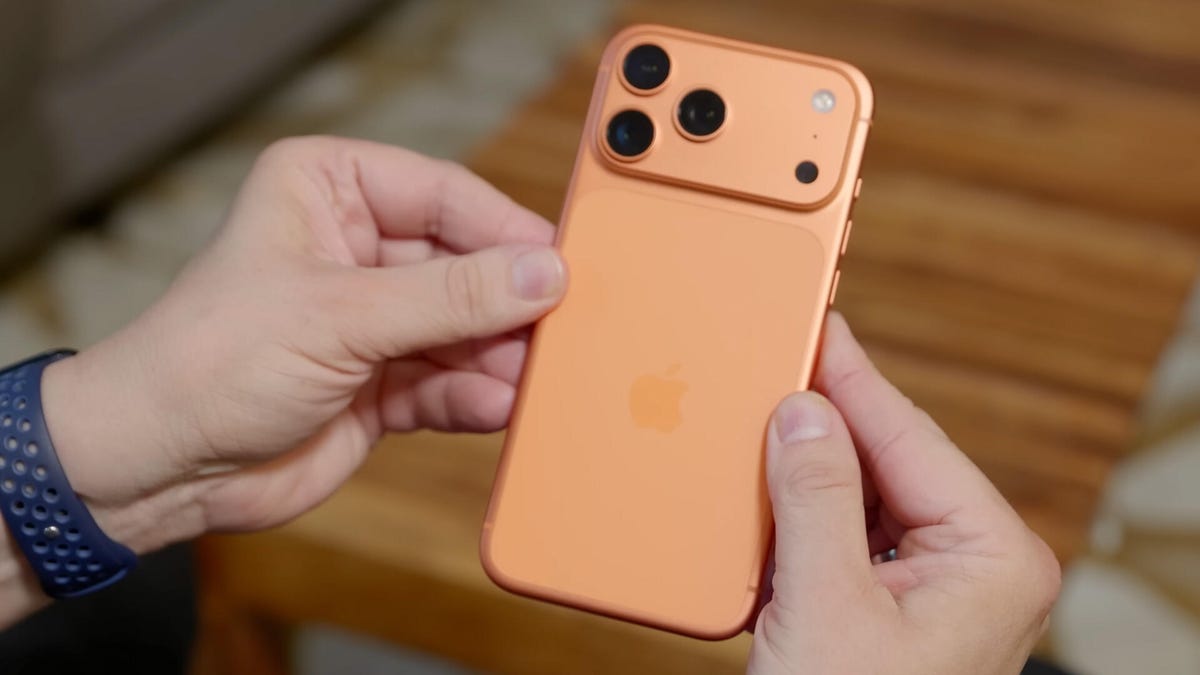
Despite tariffs and market uncertainty, global smartphone shipments increased 2.6% in the third quarter of 2025, compared to the same time last year, according to the International Data Corporation. Additionally, preorders for the iPhone 17, which launched last month, outpaced last year’s iPhone 16.
These increased sales include premium phones like the latest iPhones and Samsung foldables, suggesting yet again that pricier phones still sell in periods of economic strain. It’s a remarkable achievement, says IDC senior research director Nabila Popal, citing shrewd financing options as the reason people keep buying these high-end phones, which cost anywhere from $800 to nearly $2,000.
«[Phone makers] have mastered the art of innovation not only in hardware and software to entice upgrades but also in removing purchase friction. They have flawlessly combined cutting-edge devices with innovative financing models and aggressive trade-in programs that make the upgrading decision a ‘no-brainer’ for consumers,» Popal said in an IDC press release.
Apple sold 58.6 million iPhones this quarter, an increase of 2.9% over the same period in 2024, with more preorders for the iPhone 17 series than its predecessor. But Samsung wasn’t far behind, with its Galaxy Z Fold 7 and Galaxy Z Flip 7 selling better than all of the company’s prior foldables. The company still reigns atop the phone market with 61.4 million phones sold, representing 19% of the market in the third quarter of this year — an increase of 6.3% from the same period last year. Meanwhile, Apple lands slightly behind Samsung with 18.2% market share this quarter.
The other phone makers trailing Apple and Samsung are, in order: Xiaomi, with 13.5% of the market; Transsion, with 9%; and Vivo with 8.9%. The remaining companies in the phones industry, from Chinese stalwarts like Oppo and Honor to Motorola and Google, make up the remaining 31.4% of the market for the quarter. All told, 322.7 million phones were sold, up from 314.6 million in the third quarter of 2024, according to IDC.
IDC’s findings for the third quarter continue the small but steady growth of phone sales over the year, including a modest 1% increase in the preceding three months — which includes the April deadline when President Donald Trump unveiled sweeping tariffs. In the second quarter, IDC cited midrange devices like Samsung’s Galaxy A36 and other phones that started incorporating AI. But even persistent tariffs haven’t slowed down people’s appetites for pricier phones in the third quarter.
Technologies
Today’s NYT Mini Crossword Answers for Tuesday, Oct. 14
Here are the answers for The New York Times Mini Crossword for Oct. 14.
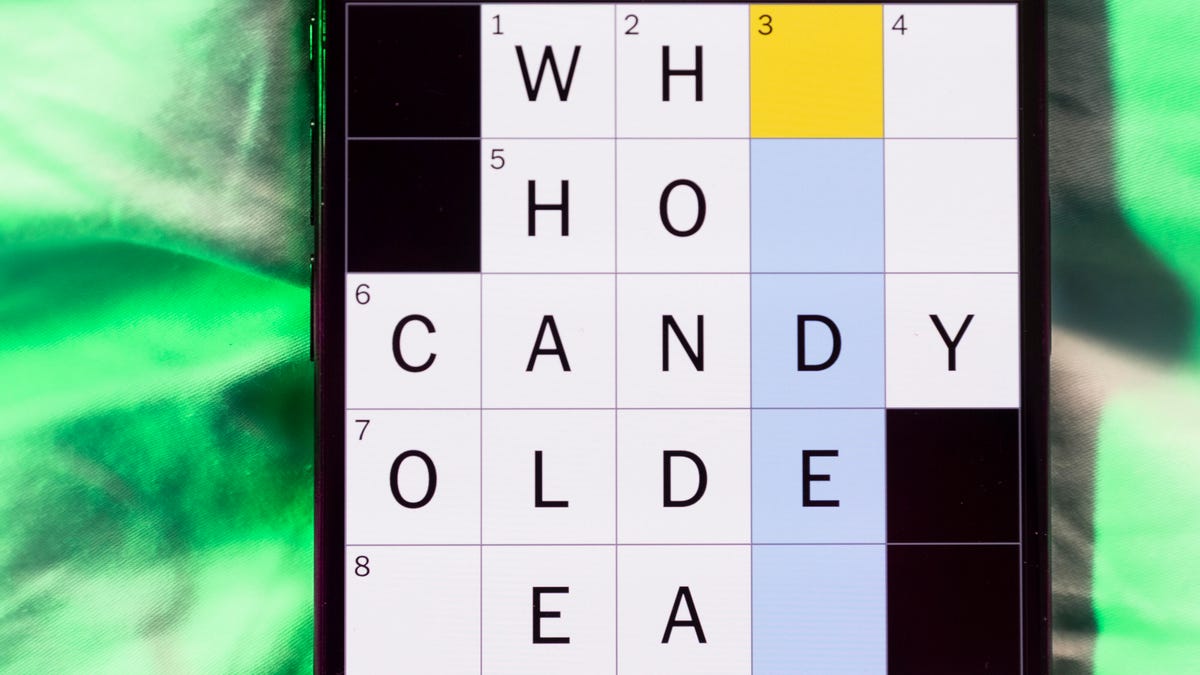
Looking for the most recent Mini Crossword answer? Click here for today’s Mini Crossword hints, as well as our daily answers and hints for The New York Times Wordle, Strands, Connections and Connections: Sports Edition puzzles.
Today’s Mini Crossword has an odd vertical shape, with an extra Across clue, and only four Down clues. The clues are not terribly difficult, but one or two could be tricky. Read on if you need the answers. And if you could use some hints and guidance for daily solving, check out our Mini Crossword tips.
If you’re looking for today’s Wordle, Connections, Connections: Sports Edition and Strands answers, you can visit CNET’s NYT puzzle hints page.
Read more: Tips and Tricks for Solving The New York Times Mini Crossword
Let’s get to those Mini Crossword clues and answers.
Mini across clues and answers
1A clue: Smokes, informally
Answer: CIGS
5A clue: «Don’t have ___, man!» (Bart Simpson catchphrase)
Answer: ACOW
6A clue: What the vehicle in «lane one» of this crossword is winning?
Answer: RACE
7A clue: Pitt of Hollywood
Answer: BRAD
8A clue: «Yeah, whatever»
Answer: SURE
9A clue: Rd. crossers
Answer: STS
Mini down clues and answers
1D clue: Things to «load» before a marathon
Answer: CARBS
2D clue: Mythical figure who inspired the idiom «fly too close to the sun»
Answer: ICARUS
3D clue: Zoomer around a small track
Answer: GOCART
4D clue: Neighbors of Norwegians
Answer: SWEDES
-

 Technologies3 года ago
Technologies3 года agoTech Companies Need to Be Held Accountable for Security, Experts Say
-

 Technologies3 года ago
Technologies3 года agoBest Handheld Game Console in 2023
-

 Technologies3 года ago
Technologies3 года agoTighten Up Your VR Game With the Best Head Straps for Quest 2
-

 Technologies4 года ago
Technologies4 года agoVerum, Wickr and Threema: next generation secured messengers
-

 Technologies4 года ago
Technologies4 года agoGoogle to require vaccinations as Silicon Valley rethinks return-to-office policies
-

 Technologies4 года ago
Technologies4 года agoBlack Friday 2021: The best deals on TVs, headphones, kitchenware, and more
-

 Technologies4 года ago
Technologies4 года agoOlivia Harlan Dekker for Verum Messenger
-

 Technologies4 года ago
Technologies4 года agoiPhone 13 event: How to watch Apple’s big announcement tomorrow

